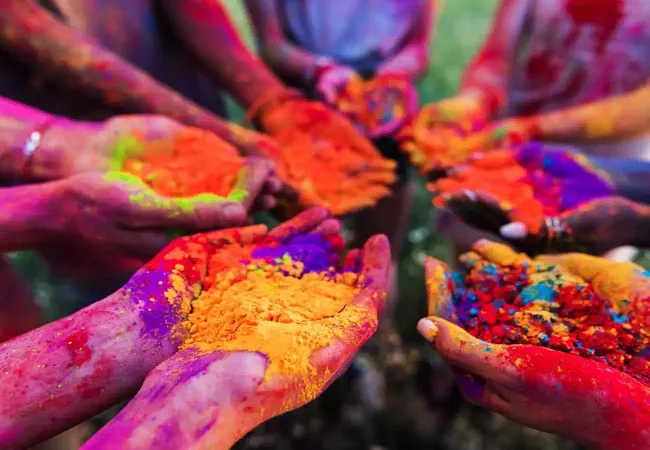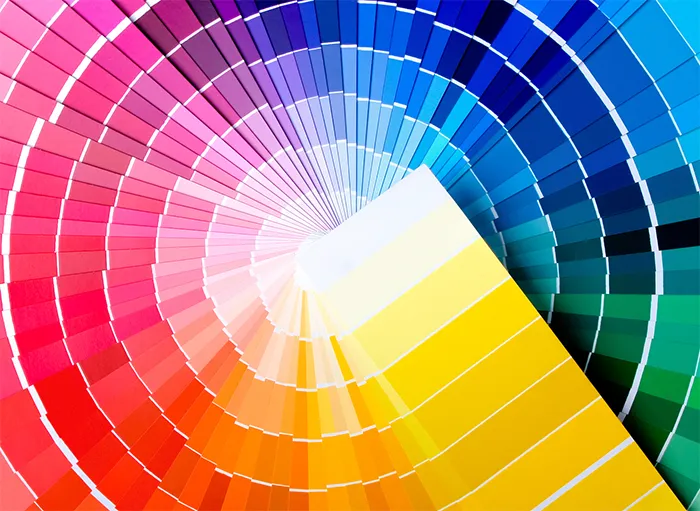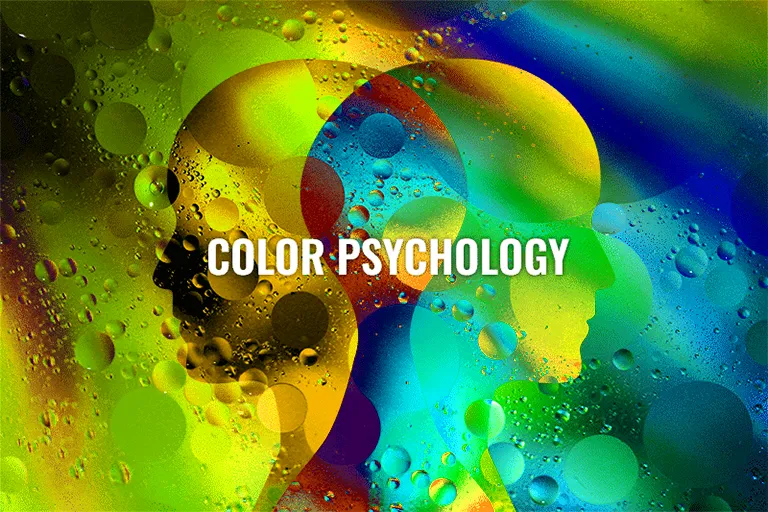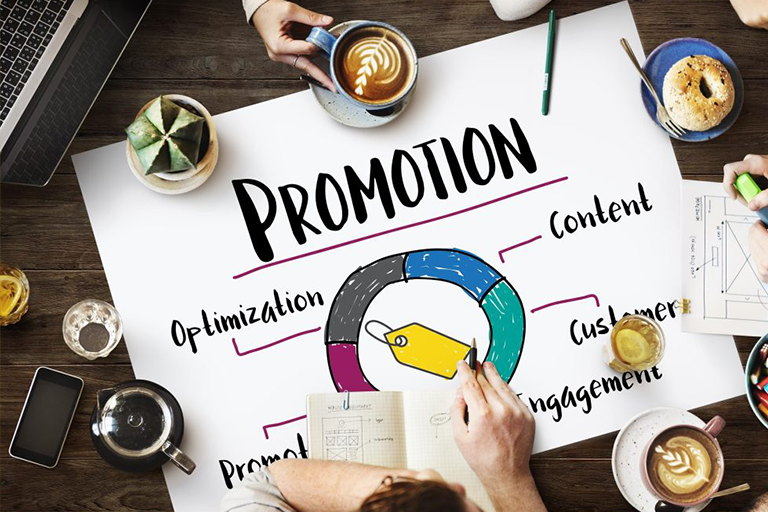The discussion of the psychology of colors in marketing and advertising is one of the most complex, interesting, important, and at the same time ambiguous discussions.
Almost from the time when color printing of newspapers started on a large scale and advertising agencies sold the design of advertising campaigns as a specialized service to business owners, the discussion of the psychology of colors and the role of color in marketing and advertising was seriously raised.
We have all experienced that color, whether in advertising, packaging or TV commercials, affects our judgment of a product or brand.
On the one hand, advertising agencies point out that color and the psychology of colors play a very important role in marketing and advertising, and on the other hand, they emphasize that part of our expertise is choosing colors that can attract customers. and encourage you to buy.
But in fact, if you ask them what research they have done in this field or what support they have for these choices, they usually refer you to their previous experiences.
Therefore, while it is easy to accept the role of choosing colors and the psychology of colors in marketing and advertising, there is generally no solid connection between the importance and the set of information and recommendations that are presented afterwards.
In such a situation where most of the advertising agencies without any background and research claim expertise in the field of color selection, the task of checking colors is very difficult.
On the one hand, I can’t simply set up something like fortune-telling tables, like humor magazines and entertainment sites, where the characteristics of red color are like this, and the characteristics of blue color are like this, and black color has these differences with yellow color.
On the other hand, saying that color is a cultural issue and that the effects of color vary from place to place and from person to person probably won’t solve any of your problems.
Someone who wants to have an advertising banner on a website tomorrow or a billboard on the streets or publish an ad in a newspaper, cannot escape from the choice of color under these excuses.
On the other hand, one should be careful that the taste of designers and graphic artists does not cast a shadow on the realities of the market and individual taste does not take over the fate of the business instead of experience and scientific feedback.
Considering these expectations and limitations, I will point out some key points about the psychology of colors and its role in marketing .
The importance of color in marketing and advertising
Today, it can be safely said that color and the psychology of colors play a very important role in marketing and advertising.
Although this issue has been accepted by most marketing and advertising specialists in the past, but with the development of digital technology and the possibility of measuring human behavior against different colors, the amazing effect of color on people’s perception and choice has been proven more than before.
You can find many reports on the web that changing the color of a button sometimes increases the probability of clicking on it by more than 50%.
The influence of culture on the effect of colors
A significant part of what we hear today as the psychology of color in Iranian marketing and advertising is a direct translation without study and knowledge of American and to some extent European studies.
This is while discussing colors and the psychology of colors, the cultural background is very important and the message of a color and the effect of a color are not necessarily the same in different cultures.
For example, in our culture, green color is sacred, and on the other hand, in nature, green color shows the growth, dynamism and vitality of nature.
Let’s remember that an artist’s opinion about the message of a color or the effect of a color, in the field of marketing and advertising, has no preference or difference from a common person.
What has the final word in marketing and advertising is research, and artistic opinion in the business environment will be reliable when its Rial value is seen in the company’s bank account and confirms the correctness of that opinion.
Maybe this word seems a little bitter or hard. But people’s behavior and people’s response to colors are sometimes in such a way that people themselves do not understand and accept it, so we must remember to never ignore the value of research on the effect of colors.
Inducing the message of colors
To say that black conveys this message, or white conveys that message, or green increases sales, can be very imprecise or completely false.
We must clearly state what we are talking about:

The response that a color evokes in the packaging of a product is not necessarily the same as the response that the same color evokes on the wall of the store and the response that the same color evokes on the website page.
For example, if we are talking about the effect of the color brown or the meaning of the color brown, we must immediately explain where and under what conditions we are talking about the effect and meaning of the color.
Although the memory or mental models of people and even ethnicities have an effect on the type of perception and effectiveness of color, there have always been global and common characteristics on people’s perception of color. As an example, we can refer to smell and taste. In other words, no matter what culture we have, many colors may be associated with a certain type of flower, edible or drinkable, and for this reason, it may or may not be desirable.
It is not for nothing that we name many colors like this: lilac, lemon, plum, charcoal, banana, etc.
If the type of color matches the brand in advertising and packaging , it helps to promote it. For example, chewing gum, whose mint flavor is generally desirable, should be green, of course, except for banana gum!
Effect of color in marketing and advertising
So it can be said that the effect of color is very important and if we skip superficial words, everyone even in their industry has little knowledge and of course many prejudices about colors and the psychology of colors.
In other words, we cannot suddenly say that blue color is good for this work and black color is more suitable for that work without any conditions and independent of the application and field of use. Because the effect that red color has when used on a billboard can be completely different from the effect that the same color has on a newspaper ad or the effect that the same color has on the price tag of a product.
So, to determine the effect of color, instead of saying what properties red color has, we should ask: what effect does red color have on the registration button on a site.
In color psychology, if we know how to ask the right question, searching for the right answer, even if it is difficult, is never impossible.
Most of the ambiguities and misconceptions related to the use of color psychology in marketing and advertising are due to the fact that we are focusing on the wrong question.
Surface and color space
Before we want to talk about the effect of a color on the customer’s behavior, we must determine in which space and on which surface this color will sit.
When we talk about the effect of a color on the audience, we must remember that the effect of color in one area is not necessarily the same as in other areas.
For example, the color red, which may draw the attention of drivers to a billboard of a luxury product , when it is placed on the price tag of the same product, does not necessarily induce luxury. Because we are used to seeing and reading high prices usually on black price tags.
Yellow color is used as the background color of written advertisements, but because it is a little more difficult to see on the screen and because in the digital space, yellow color is generally used for danger and warning, it is possible to use it on website pages. is annoying for the audience or creates unfavorable associations.
Purposes of using color
Attracting the audience’s attention
Here, the goal is simply to stand out from the crowd.
We want the audience who is moving on the freeway to stop looking at our billboard.
We want our product to stand out better than other products in the classification of a store.
We want a part of the label to be seen earlier and faster than other parts of the label.
We want our ad to stand out and be visible among the crowd of ads on a website or a newspaper.
Inducing a specific attitude (Attitude and Perception)
We want the audience to feel trustworthy by seeing our logo.
Or, seeing an electric drill, the customer feels that this product is industrial and resistant.
Or we want the audience not to feel that they are facing an advertisement report when they see an advertisement report .
Or we want to induce the elegance of the design to the customer inside the lining of a dress.
In all these cases, we want to influence a person’s attitude or perception as much as possible by using color. Or to put it better, we want to know how much we can influence the audience’s attitude and perception by using color in the application and space we are considering.
Better readability and recognition (Comprehension)
Another question may arise for us when choosing a color: what color should I use so that the audience can see my graphic work or my text or my photo with the least amount of pressure and in the simplest way.
We are not talking about complex psychological effects here. Rather, we are talking about color receiving sensors in the human eye.
Because we know that being better read and easier to see can play an important role in the success of our advertising and marketing activities.
Arousing emotions (Emotional Response)
Let’s assume that we want the viewer to feel that he is facing a happy and lively atmosphere when he sees the decoration of the office.
Or do the design and layout of the magazine in such a way that the theme and general mood of it induce sadness and mourning.
Or to convey the feeling of fear and panic to the viewer in an advertising poster.
Or in a digital ad, give the viewer the feeling that there is not much time left.
In all of these cases, our goal in using color is to evoke a feeling or emotion.
Call to Action (CTA)
Here, we have a certain expectation of color to cause the viewer to take action.
We want him to register on the site by seeing the registration button.
We want to place one of the products in the shopping cart after seeing the sign that we have installed above the product floor of the store.
We want to encourage him to choose the third option among the four options that we put in front of him.
In all of these cases, we have used color to evoke an action.
The complexity of the story starts from the point where the effects of colors in different spaces are not necessarily consistent.
For example, a color that attracts attention does not necessarily force the viewer to take action. Or a color that inspires a sense of confidence doesn’t at the same time inspire a modern and up-to-date design.
Color Preference
We all like some colors more and some colors less. We simply talk about our favorite colors and we even have experiences that women’s favorite colors may be different from men’s favorite colors.
You may have experienced that sometimes with the change of age, our favorite colors change.
This phenomenon is called Color Preference, which is one of the important discussions in the psychology of colors and environmental psychology.
Of course, the discussion does not end that easily.
Maybe your favorite color is sky blue, but you don’t want your car to be that color.
Or you prefer dark clothes, but for the wallpaper of the house, your choice is light colors.
For this reason, color preference is divided into two independent discussions:
-
Single and independent color preference (Context less)
-
Color preference according to the subject, object and environment (Contextual)

When asked what are your favorite colors? You declare your single or context less color preference.
But when you are told, what color would you like your mobile phone to be, you have been asked about contextual color preference.
The reason for people’s interest in colors
Do we have a specific color preference at the moment of birth? Or do we gradually learn what colors to like and what colors not to choose? Such a question has been discussed and disputed for years.
The traditional view was that a significant part of our color preferences goes back to the long-term evolution of humans during life on earth.
In the sense that, for example, blue color is a calm and lovely color among the majority of people in the world, because the sky is blue, and for example, brown color is considered by fewer people. Because in nature, the brown color is related to soil, animals and human and animal excrement.
However, please note that when we talk about the unpopularity of brown color, we are talking about single color preference. Because if we think about the color preference of objects and materials, probably for buying and eating chocolate, many of us prefer brown color.
 Over the last few years, scientific studies on human color preferences have increased and developed.
Over the last few years, scientific studies on human color preferences have increased and developed.
Today, on the one hand, we know that man’s long-term life on earth has had a role in his color preferences, and on the other hand, we know that each person modifies or changes his color preferences during his individual life.
In other words, we cannot say that people’s color preferences are the same and issue general rulings in this field.
Pyramid model of color experience
One of the most complete models used today to explain the color preferences of people is the Color Experience Pyramid model.
Biological responses
Our feeling of different colors is caused by the simultaneous and mutual effect of several factors, of which biological responses are one of these factors.
Collective unconscious
In addition to biological responses, the collective unconscious is also important, and this is the thing that puts brightness and whiteness, light and angel in one group, and darkness and despair, blackness and Satan in one group, all over the world.
Symbols and associations
Symbols and associations have their own effect. For example, any Iranian who sees the combination of green, white and red anywhere will like it. Because it reminds us of the flag of our country. Or the color green, which is associated with our religious beliefs, naturally makes us feel good.
Cultural influences
We should not forget the cultural influences. Black is the color of mourning in our country. As in the Far East, white is the color of death. Red is the color we wear in happiness and we cannot imagine that someone wears red in sadness.
Fashion and lifestyle
Along with all this, you should also think about fashion and lifestyle. When buying a car in the low and medium price range, generally white and black colors are more popular.
Maybe because of their conventionality or because the demand for them is higher when they are sold.
Also, every year, certain colors become popular and our eyes may get used to them and for this reason, in choosing clothes or the color of curtains and wallpaper, we see them as more beautiful or more pleasant than other colors.
personal relationship
The last level is the personal relationship with color. The person you loved the most loved the color purple or had purple clothes that they usually wore.
For you, purple color is a reminder of your love and affection and all your good memories. A feeling that probably won’t be evoked in another person who doesn’t have your memories.
Therefore, each of us has a reaction to each color, which is the result of a complex combination of many factors, and many of these effects may be so intertwined and hidden in unconscious layers that ultimately we cannot express clearly and clearly. Let’s say why a certain type of blue color calms us so much.
The psychology of red
Psychologists and behaviorists have always approached the discussions related to the psychology of colors with concern and obsession, because the discussion of colors and the psychology of colors is largely a cultural discussion.
The difference in the way we humans look at colors is not only limited to culture, and mental history and other factors also affect our physiological response to colors. To prove this claim, it is enough to pay attention to the color red.
Red is a color that many people in the world use to show love. The Chinese consider it a sign of good luck and dress their brides in red, and parts of Africa use red for mourning.
In Western Europe and North America, the devil and the devil’s tail are always drawn in red, and at the same time, red is used in the flag of the United States of America.
In mourning, although we may accept and tolerate not wearing black clothes, we probably won’t tolerate red clothes.
Regarding any color we are talking about, part of its effects and associations are culturally dependent, and another part can be beyond the boundaries of culture. For example, regardless of culture, white evokes purity and cleanliness. But it has many other associations that are subject to the culture of nations.
Naturally, what share of a color’s effects is culturally specific and what share transcends cultural boundaries is different for each color.
 Now it is better to feel that those who suddenly, without any introduction, but without any kind of study and research, for example, say: red color is the color of passion and excitement, how far away from the space of science and knowledge and study. are.
Now it is better to feel that those who suddenly, without any introduction, but without any kind of study and research, for example, say: red color is the color of passion and excitement, how far away from the space of science and knowledge and study. are.
In the following, by referring to cross-cultural studies, we try to get more familiar with a range of red color psychology discussion that goes beyond cultures and is considered relatively comprehensive.
Despite the differences in the meaning of red color for different cultures, it can still be said that red color has many transcultural aspects compared to many other colors.
Some scientists believe that this problem is caused by the millions of years of human life on earth. To the extent that the response of some animals to the color red is similar to that of humans.
The blushing of the face due to love and anger and blood and bloodshed, which have always been with humans, are among the things that have caused the red color to have common meanings and associations for all humans in many aspects.
However, today, at least in three different fields, the transcultural effects of red color have been confirmed:
sexual attraction
Red color in women’s clothing and makeup makes them more attractive to men. A large body of research supports this effect of red color.
Goal setting and success
For humans, red color has meant caution and attention, warning and danger in many environments.
This issue is so accepted and pervasive that the majority of traffic signs and stop and danger signs are red, and people around the world understand a steady red or flashing traffic light as a sign of stop or caution.
Research shows that in environments where there is some kind of success or goal setting or doing a task, red color causes reduced efficiency and a conservative state in decisions.
The following are examples that have been tested:
- Slowing down and eventually reducing the intelligence test score
- Solving heavy mathematical equations
- Strategic decisions
- Choosing an activity from among several activities
Supremacy and competition
Several studies have been conducted that confirm the increased sense of competition due to the observation of red color. Of course, note that this issue does not conflict with the second case.
In competitions where supremacy is a factor, red color can increase the desire for supremacy. For this reason, the use of red color can make athletes more excited and ready for sports competitions.
What is mentioned in the second case are activities that are somehow related to mental calculations and cost-benefit evaluation.
In other words, red color brings excitement in physical activity and activates caution and avoidance in mental activity.
Articles in the psychology of colors
I have listed below 7 valuable articles in the field of color psychology written in English. This list is very useful for people who are interested in studying more about the psychology of colors.
1- An overview of the research done in the field of color in applied psychology and social sciences
Color studies in applied psychology and social science
2- The role of color perception in choosing products
Color perception and the product choice
3- The effect of color on marketing and advertising for children
Children as Consumers: Advertising and Marketing
4- Does the color of food change our perception of its taste?
Does food color influence taste and flavor perception in humans
5- The two-dimensional effect of color on the buying process
The two-dimensional impact of color on shopping
6- The effect of color on our judgments: Judgment is not color blind
7- Using color in B2B advertising
Color usage in Business-to-Business advertising
In the end, I suggest that if you are interested in the subject of color psychology, you should read the book Art of Color by Johannes Itten .
In a part of this book it is stated that:
The merchant had invited his friends and their wives to dinner. As soon as the guests entered, they smelled the appetizing smells from the kitchen and everyone was waiting to eat delicious food. As soon as this happy crowd gathered around the dining table, the host turned on the red lights of the hall. This made the meats look great and appetizing, but the spinach turned black and the potatoes bright red. Before the guests were surprised by the result, the red lights gave way to blue. Now the meats got a rotten state and the potatoes appeared moldy.
All the guests were blinded by their appetites, when suddenly the yellow light turned on, the soft drink inside the tent turned into castor oil, and the guests turned into moving corpses, some of the more elegant ladies hurriedly got up and left the place. Although everyone knew that this was due to the change in the color of the lights, no one could think of eating. With a laugh, the host once again turned on the usual lamp that had white light, and the crowd immediately regained its cheerful mood. ”
Who can ignore the profound effect of colors on humans, whether they are aware of it or not? What is your opinion about this?












